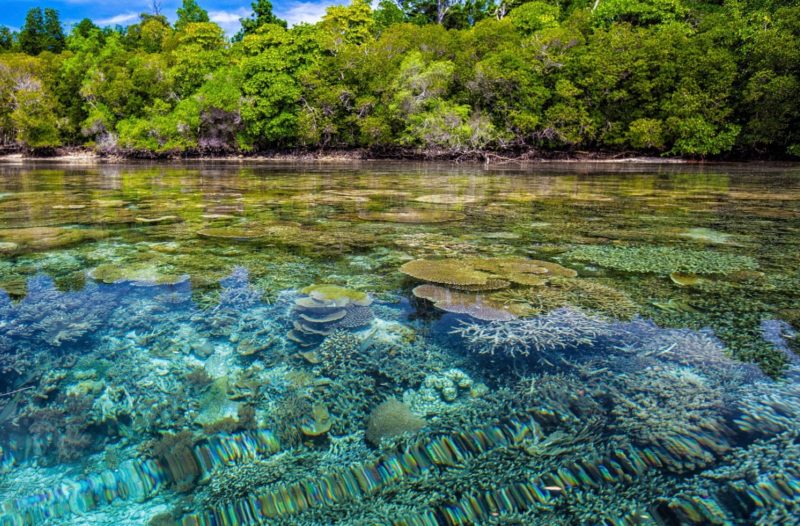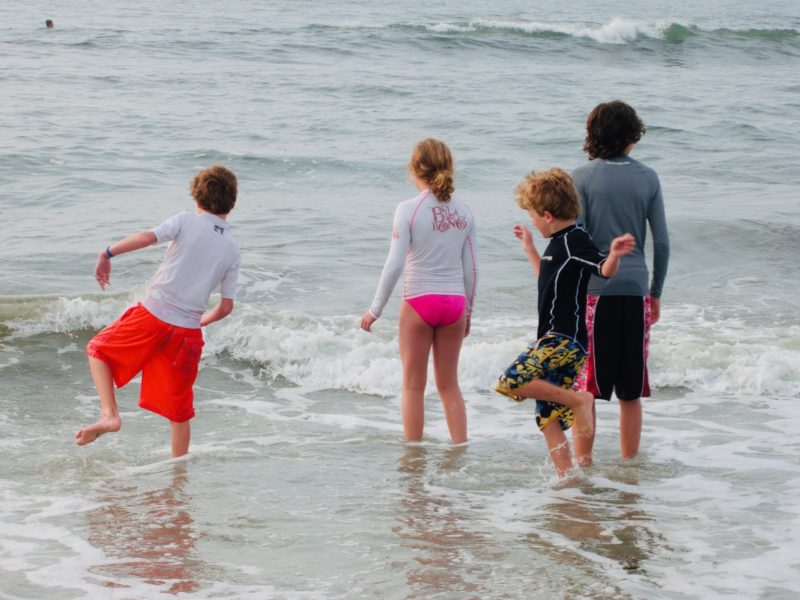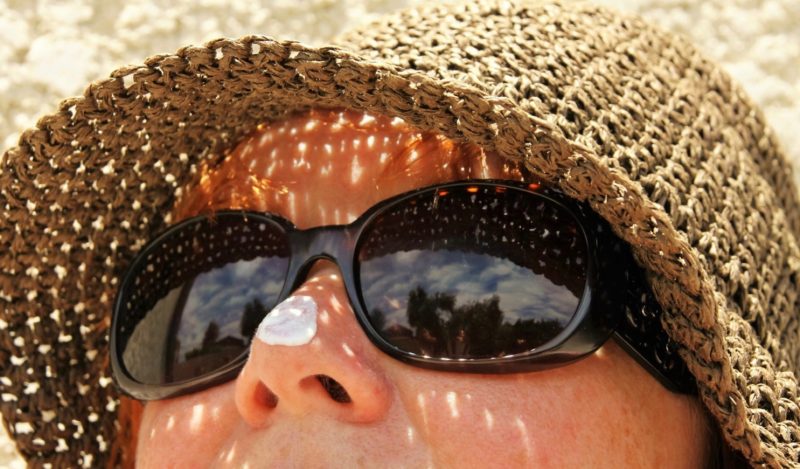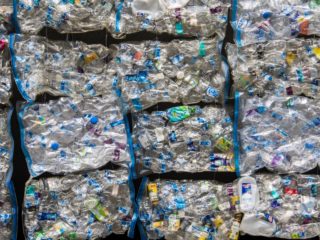When I was a child, rarely was a thought given to sunscreen safety, let alone eco friendly sunscreen. I grew up in South East Asia, in the shimmering heat of equatorial Singapore, Indonesia, the Philippines, and Hong Kong. My earliest memories were of endless hours spent playing outdoors under the intense sun. No one used sunscreen, and the idea of covering up seemed fussy and uncomfortable.

I finally got the warning about the dangers of prolonged sun exposure when I had two precancerous moles excised from my back. I was 20, and the excisions left two large, ugly scars and one frightened patient! This was enough of a scare to change my habits and ever since, I’ve been vigilant about covering up and wearing sunscreen.
There’s now evidence showing that chemicals contained in some of the more effective sunscreen products are toxic to coral reefs. Argh! Can we protect our bodies while protecting these precious marine ecosystems? Yes!
Let’s look at the what and why of eco friendly sunscreens so you know which ones are best for you and the environment.
Table of Contents
Why Do We Need Eco Friendly Sunscreens?
Protection Against Skin Damage

I still love spending time in the sun, but all those years of unprotected sun exposure did irreparable damage to my skin, in the form of wrinkles, freckles, moles, and more!
Then there’s skin cancer. Skin cancer is the most commonly diagnosed cancer and it’s on the rise. According to the American Cancer Society’s 2019 Cancer Facts & Figures report, “The incidence of melanoma of the skin has risen rapidly over the past 30 years …”
Sunscreen isn’t the only answer to protect against skin damage from the sun’s harmful rays, but it can certainly help. And if you’re exposed to the sun for long periods of time or get burned, make sure you care for your skin with natural remedies.
Safe for the Environment
Some of the chemicals found in many American sunscreen products have been found to be toxic to coral reefs and marine life. Although global warming plays a large role, sunscreen chemicals are also complicit in the destruction of marine ecosystems.
Taking action, Hawaii became the first state in 2018 to ban sales of environmentally toxic sunscreen additives, oxybenzone and octinoxate and is poised to add avobenzone and octocrylene to the list of banned substances. Key West, Florida, recently passed its own ban. Fortunately, there are “reef safe” eco friendly sunscreens that are safe for the environment and for you.
But … Sunscreens Aren’t the Best Line of Defense
It’s tempting to think that you’re protected by slathering on sunscreen. Yes, you should wear sunscreen, but the best line of defense against the sun’s damaging rays is to keep your sun exposure to a minimum, seek shade when possible, and cover up!
What to Look for in an Eco Friendly Sunscreen

What To Look for on Sunscreen Labels
Here’s what to look for on the labels to make sure you’re protected:
- Broad spectrum. These products provide protection against both harmful ultraviolet rays, UVA and UVB.
- Mineral based, as recommended by the Environmental Working Group, a non-profit organization dedicated to protecting human health and the environment.
- Sun Protection Factor (SPF). Look for SPF between 15 – 30. Anything higher than 50 provides a false sense of protection against the sun. And it’s probably more expensive.
- Non-nanotized zinc oxide or titanium dioxide is safe for humans and marine life.
- Check expiration dates to make sure the product is still effective.
What to Avoid
- Oxybenzone and octinoxate. These ingredients are considered probable endocrine disruptors and contributors to coral reef and marine life destruction.
- Vitamin A (Retinyl palmitate). Recent studies appear to indicate that this synthetic form of Vitamin A accelerates the growth of skin tumors and lesions.
- Nanoparticles that could penetrate the skin.
- Parabens are harmful to both humans and marine life.
- Additional product ingredients with moderate human toxicity concerns: homosalate, octisalate, octocrylene.
Spray vs Cream
My preference is cream over spray sunscreens. There are no inhalation concerns with a cream, and you’ll have greater application control.
Can You Make Your Own?
The internet is filled with DIY natural eco friendly sunscreen recipes that claim to provide a safer alternative to store brand products.
I don’t recommend making your own sunscreen. These recipes haven’t been subjected to the same rigorous testing as their commercial counterparts for UVA and UVB protection. It’s just not worth the health risk of relying on a potentially ineffective sunscreen when there are so many safe commercial brand alternatives.
Sunscreen and Sun Exposure Tips to Keep You Safe
Sunscreen Application
Sunscreen is only effective if you use it properly:
- When to apply. Wear it every day and all year round! Make it as much a part of your routine as brushing your teeth. I apply sunscreen to my face and neck every day and on my arms when I’m wearing short sleeves.
- Apply liberally. Use about 1 oz of sunscreen – around a palmful – for your arms, legs, neck, and face. Don’t forget balm for your lips!
- Reapply often during the day, particularly on sunny days. Depending on your activity, the recommended frequency is about every two hours.
- Remember: Sunscreen isn’t the first or best line of defense. Use it as a supplement to other forms of sun protection.
What Else Should You Do to Protect Yourself and the Environment?

Here are some simple ways to protect yourself from the sun. These have the added benefit of being eco friendly options:
- Avoid the sun when UV exposure is at its greatest, typically between 10am and 4pm. Take the shadow test: Minimize your time outdoors when your shadow is shorter than you.
- Cover your arms and legs.
- Wear a hat.
- Wear sunglasses that protect against UVA and UVB rays.
- Stay in the shade when you can.
- Wear a swim shirt if you plan extended time in the water or at the beach.
My Eco Friendly Sunscreen Picks
Lotions for Face and Body
- All-Purpose. EltaMD Skincare UV Pure Broad Spectrum Lotion, SPF 47. The EltaMD line of products is one of my favorites. This lotion is fragrance free and goes on smooth and virtually clear.
- Sweat and water resistant. Badger Active Mineral Sunscreen Cream for Face and Body, SPF 30. An excellent choice for the entire family and the environment. Made from natural ingredients that make it “reef safe”, it’s also non-comedogenic and hypoallergenic. Water and sweat resistant.
- Tinted. All Good Tinted Sunscreen Lotion, SPF 30, has it all: The non-nano zinc formula is “reef safe”, water resistant, and vegan. It also includes an organic ingredient blend of skin conditioners that include calendula, buriti oil, and rosehip oil.
- For babies and sensitive skin. Baby & Kids Sunscreen Lotion from ATTITUDE Mineral, Fragrance Free, SPF 30, is a top-rated EWG product, and I can see why. The 100% non-nano zinc oxide formula is the safest option for babies and the environment.
Sunscreen Sticks
- Sweat and water resistant. Thinksport Body & Face Sunscreen Stick, SPF 30. With the highest level of water resistance (80 minutes), this stick will keep the sun’s rays at bay. Formulated to be safe for humans and the environment.
- For babies and sensitive skin. Adorable Baby Sunscreen Stick, SPF 30. This top-rated sunscreen uses 100% natural ingredients and is fully vegan.
- Tinted. Babo Botanicals Tinted Face Mineral Sunscreen Stick, SPF 50. Perfect for adding a little glow to your skin. It also includes an anti-aging hyaluronic acid. Fragrance free and water resistant.
Lip Balm
Loving Naturals Sunscreen Lip Balm, SPF 30, is water resistant and made with 100% natural ingredients.











